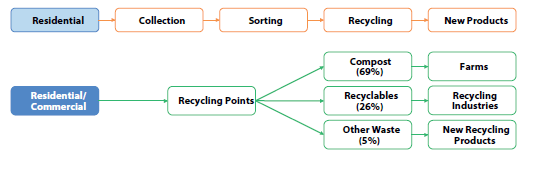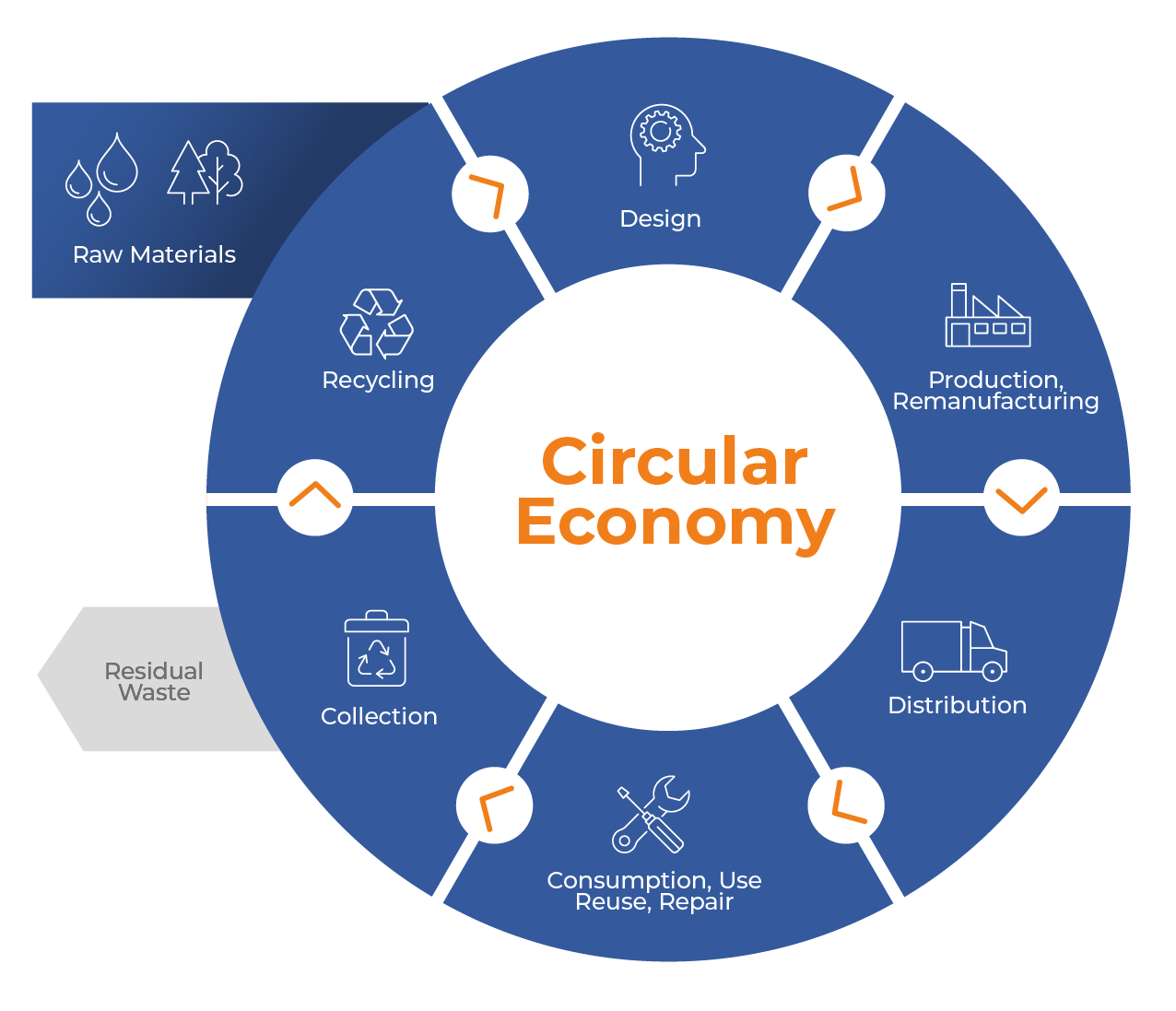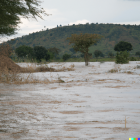NATIONALLY APPROPRIATE MITIGATION ACTION (NAMA)
What is a NAMA?
Nationally Appropriate Mitigation Actions (NAMAs)
Nationally Appropriate Mitigation Actions (NAMAs) are voluntary, non-binding policy instruments that provide a framework for pursuing a country’s socioeconomic and development goals, while contributing towards global greenhouse gas mitigation efforts.
Following the success of the 2015 Paris agreement on climate change, many countries including Kenya introduced their own NAMA focused on waste management. NAMAs were first introduced in 2007 at the 13th Conference of Parties to the Kyoto Protocol (COP13) in Bali.
Nairobi.
Nairobi produces around 2,400 tons of waste every day, of which only 38 per cent is collected and less than 10 per cent recycled (JICA, 2010). The remaining 62 per cent is left on illegal dumpsites and next to houses or burned.
Instead of waste being collected for disposal only, the NAMA facilitates the diversion of at least 90 per cent of collected waste away from disposal sites and towards various recycling practices.
The NAMA is fully aligned with the policy goals of the Kenyan government (Kenya Vision 2030, National Climate Change Action Plan (NCCAP), Environmental Management and Coordination Act (EMCA)), which promote the provision of sanitation services and recycling.
Under the NAMA, up to 600 tons of waste will be recycled every day, (which accounts for 25 per cent of Nairobi’s total waste). This will save more than 800,000 tons in CO2e emissions (over the 15 years’ lifetime of the NAMA).
The NAMA is divided into two distinct phases:
■ Infrastructure development phase (Phase 1 – years 1 to 5): Phase 1 will develop the infrastructure required to collect and recycle 600 tons of waste per day.
■ Full-scale operations phase (Phase 2 – years 6 to 15): This phase builds on the experience gained during Phase 1 and will scale the operations of the NAMA to 600 tons of waste per day.
The NAMA therefore aims to achieve 10 key success factors
■ Sector Transformation: Spur development of an environment which facilitates transformation of the waste sector in urban areas of Kenya.
■ Alignment with national priorities: Be fully embedded in Kenya’s national and sectoral development policies, strategies and targets.
■ Define Interventions: Detail concrete technological actions that will lead to real, transparent and measurable emission reductions and help the country to achieve its national goals and targets while contributing to collective efforts on international climate actions.
■ Define Eligibility Criteria: Clearly define the eligibility criteria for private sector participation and funding.
■ Value for Money: Be cost effective and provide value for money.
■ Approval Structure: Define a structure for approval of funding to beneficiaries of grant and concessional loans to ensure transparent disbursement of funds.
■ Management Entity: Detail an institutional and management system for smooth implementation.
■ Capacity Development: Define capacity development measures to drive the technical interventions and sector transformation
■ Finance: Include a financial plan and management in sufficient detail.
■ Measurement Reporting and Verification (MRV): Apply transparent and robust MRV for GHG Emission Reductions and Sustainable Development Impacts.

The increase in Kenya’s urban population has reduced the capability of the county governments to manage the solid waste generated, with less than 40 per cent being collected and disposed of at designated open dumpsites. Much of the waste is poorly managed: waste is not collected, disposal sites are inadequate, or waste is contaminated with hazardous materials.
Such impacts range from clogged drainage and sewers, waterborne diseases like typhoid, cholera and diarrhea, increased upper respiratory diseases from open burning of the garbage, to malaria. This is especially concerning in slums and other lower income areas, where high population density, paired with lack of infrastructure and service provision, only aggravates these problems. More than half of Nairobi’s 3.5 million inhabitants live in low-income areas or slums.
Dandora dumpsite
Around one third of Nairobi’s waste is transported to the only dumpsite, Dandora.
“Dandora is a health and environmental disaster. At 43 hectares, equivalent to 60 football pitches, it has grown much too vast to be managed and the waste has been contaminating the groundwater for years. This affects half a million residents living around the dumpsite. A 2007 study by UNEP that examined 328 children living close to the dumpsite uncovered that half-had blood lead levels equal to or exceeding the poisoning threshold of 10 micrograms per deciliter of blood. Exposure to such high levels of lead is linked with damage to the nervous system and the brain. “
Grand Health Challenges Blog.
Current private sector waste management models do not offer a solution to this problem either. This is because (1) waste collection companies only collect waste for the purposes of disposal; and (2) their services are too expensive for the majority of Nairobi’s population.
It is estimated that the current demand for compost is in excess of 100,000 tons/year and growing (Lachlan Kenya Ltd., December 2011. Production of compost in Kenya currently stands at less than 10,000 tons/year. Meanwhile, Kenya imports around 1,500,000 tons/year of chemical fertilizer.
The introduction of the circular economy approach will:
■ make waste management affordable to almost all income earners, as the overwhelming majority (at
least 90 per cent) of the collected waste will be recycled;
■ significantly reduce disposal costs (less than 10 per cent of waste will be residual waste);
■ generate additional revenues from the sale of recyclable materials;
■ generate additional revenues from the sale of compost; and
■ generate additional revenues from the payment of tipping fees (for NEEs owning and managing
recycling points).




